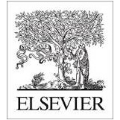The integration of RIS into UAV networks presents a transformative solution for achieving energy-efficient and reliable communication, particularly within the rapidly expanding low-altitude economy (LAE). As UAVs facilitate diverse aerial services-spanning logistics to smart surveillance-their limited energy reserves create significant challenges. RIS effectively addresses this issue by dynamically shaping the wireless environment to enhance signal quality, reduce power consumption, and extend UAV operation time, thus enabling sustainable and scalable deployment across various LAE applications. This survey provides a comprehensive review of RIS-assisted UAV networks, focusing on energy-efficient design within LAE applications. We begin by introducing the fundamentals of RIS, covering its operational modes, deployment architectures, and roles in both terrestrial and aerial environments. Next, advanced EE-driven strategies for integrating RIS and UAVs. Techniques such as trajectory optimization, power control, beamforming, and dynamic resource management are examined. Emphasis is placed on collaborative solutions that incorporate UAV-mounted RIS, wireless energy harvesting (EH), and intelligent scheduling frameworks. We further categorize RIS-enabled schemes based on key performance objectives relevant to LAE scenarios. These objectives include sum rate maximization, coverage extension, QoS guarantees, secrecy rate improvement, latency reduction, and age of information (AoI) minimization. The survey also delves into RIS-UAV synergy with emerging technologies like MEC, NOMA, V2X communication, and WPT. These technologies are crucial to the LAE ecosystem. Finally, we outline open research challenges and future directions, emphasizing the critical role of energy-aware, RIS-enhanced UAV networks in shaping scalable, sustainable, and intelligent infrastructures within the LAE.
翻译:暂无翻译



